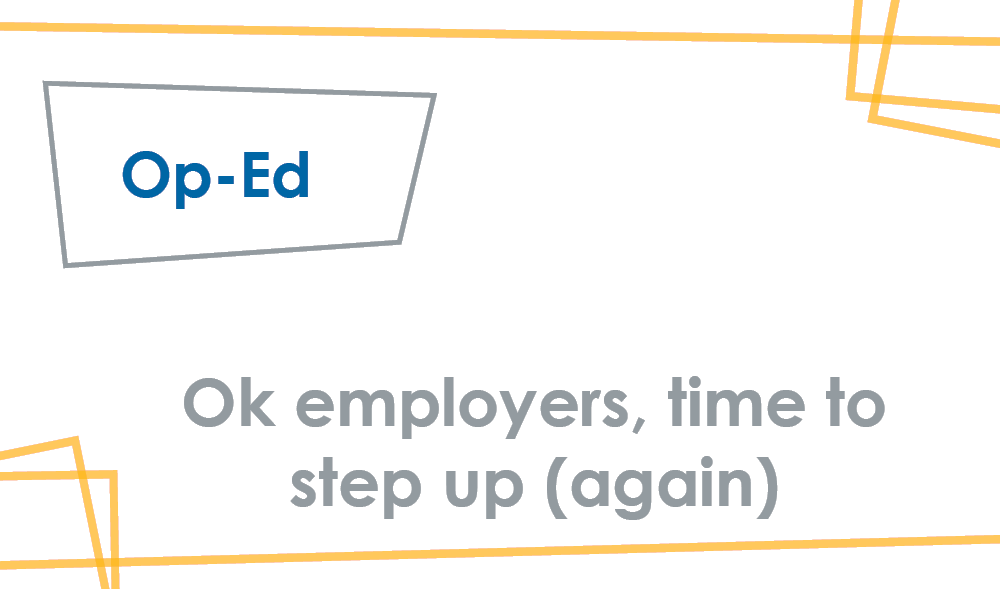Ok employers, time to step up (again)
June 25, 2019 - This column first appeared in Northern Ontario Business.

There is a labour shortage of one kind or another in all of Ontario’s northern regions. Employers in each region have been telling us that for years. Workforce Planning Boards and our own Northern Policy Institute researchers have gathered significant amounts of data to demonstrate where those gaps are and why domestic solutions, although important, will be insufficient to close the gaps.
Governments have listened. In recent months, both the federal and provincial governments have created or expanded opportunities for employers and communities to target and attract newcomers who fit critical labour shortages in northern and rural communities. By this fall, all of these new programs will be up and running. At that point, it is up to employers (and the communities that host them) to step up.
We can do this. Employers are becoming increasingly flexible and adaptive in workplace culture and accommodation. Programs building bridges with local First Nations are proving that we can connect interest and aptitude with opportunities. Efforts to support even “hard to employ” individuals with “significant barriers” are showing results. If, over the course of the next two to three years, we fail to attract and retain the talent we need, then it is on us when these pilot programs fade away and future governments refuse to try again.
Employers of all shapes and sizes need to get involved. We cannot leave it to our large employers alone to attract and absorb newcomers. In fact, we need to aggressively guard against large employers monopolizing these new avenues of entry. Where they can demonstrate, like everyone else, that existing programs are not meeting their needs then by all means, let’s get them involved. But small and medium employers need to step up as well.
Hiring a newcomer does entail a greater level of risk than may be the case with someone born and raised in your town. Every new employee, however, represents some level of risk. They also represent an opportunity for growth. Large employers do have a greater tolerance for risk than smaller employers but, on the flip side, the return is greater for the small employer than it is for the large one.
Recent government policy announcements will help to reduce the risk and make achieving the reward easier. FedNor is working on investments to support the creation and expansion of welcoming communities in the north. The province has programs like Community Immigrant Retention in Rural Ontario. Communities large and small are investing in welcoming packages, connector programs and newcomer celebrations. Resources are being made available to support long term success for newcomers.
Our big five communities have all been chosen to join the latest pilot, a federal effort focused on northern and rural immigration. The program is informally described as building from the Atlantic Immigration Pilot, which focused on jobs to be more about retention and the application of a “community hug”. Communities and employers will need to roll up their sleeves and focus on selecting candidates who have the best chance of success in that community. This isn’t just about filling the roster at the local mill, it is about growing and building your community. That means supporting the newcomers, and their families, at work and outside of it too.
The province is also creating a pilot program to support immigration to rural and northern communities. Announced in this year’s provincial budget, the program is intended to complement the federal one. Targeting communities not selected for the federal pilot (I suspect Kenora is on the top of that list for northern Ontario). This pilot is also about retention, not just attraction. It is about permanent residence, not temporary workers.
By reducing the risk, expanding supports for successful inclusion, and by focusing community efforts on welcoming not just the newcomer but their entire family, the goal is to make a newcomer hire no less risky than the hire of a “local”. Or perhaps more specifically, to encourage the newcomer (and their family) to become a “local” as fast as possible. But that effort begins and ends with a welcoming workplace, and that, whether we like it or not, places the biggest burden on our employers. Time to step up (again).
Charles Cirtwill is the founding President and CEO at NPI.
The content of Northern Policy Institute’s blog is for general information and use. The views expressed in this blog are those of the author and do not necessarily reflect the opinions of Northern Policy Institute, its Board of Directors or its supporters. The authors take full responsibility for the accuracy and completeness of their respective blog posts. Northern Policy Institute will not be liable for any errors or omissions in this information, nor will Northern Policy Institute be liable for any detriment caused from the display or use of this information. Any links to other websites do not imply endorsement, nor is Northern Policy Institute responsible for the content of the linked websites.
Northern Policy Institute welcomes your feedback and comments. Please keep comments to under 500 words. Any submission that uses profane, derogatory, hateful, or threatening language will not be posted. Please keep your comments on topic and relevant to the subject matter presented in the blog. If you are presenting a rebuttal or counter-argument, please provide your evidence and sources. Northern Policy Institute reserves the right to deny any comments or feedback submitted to www.northernpolicy.ca that do not adhere to these guidelines.
